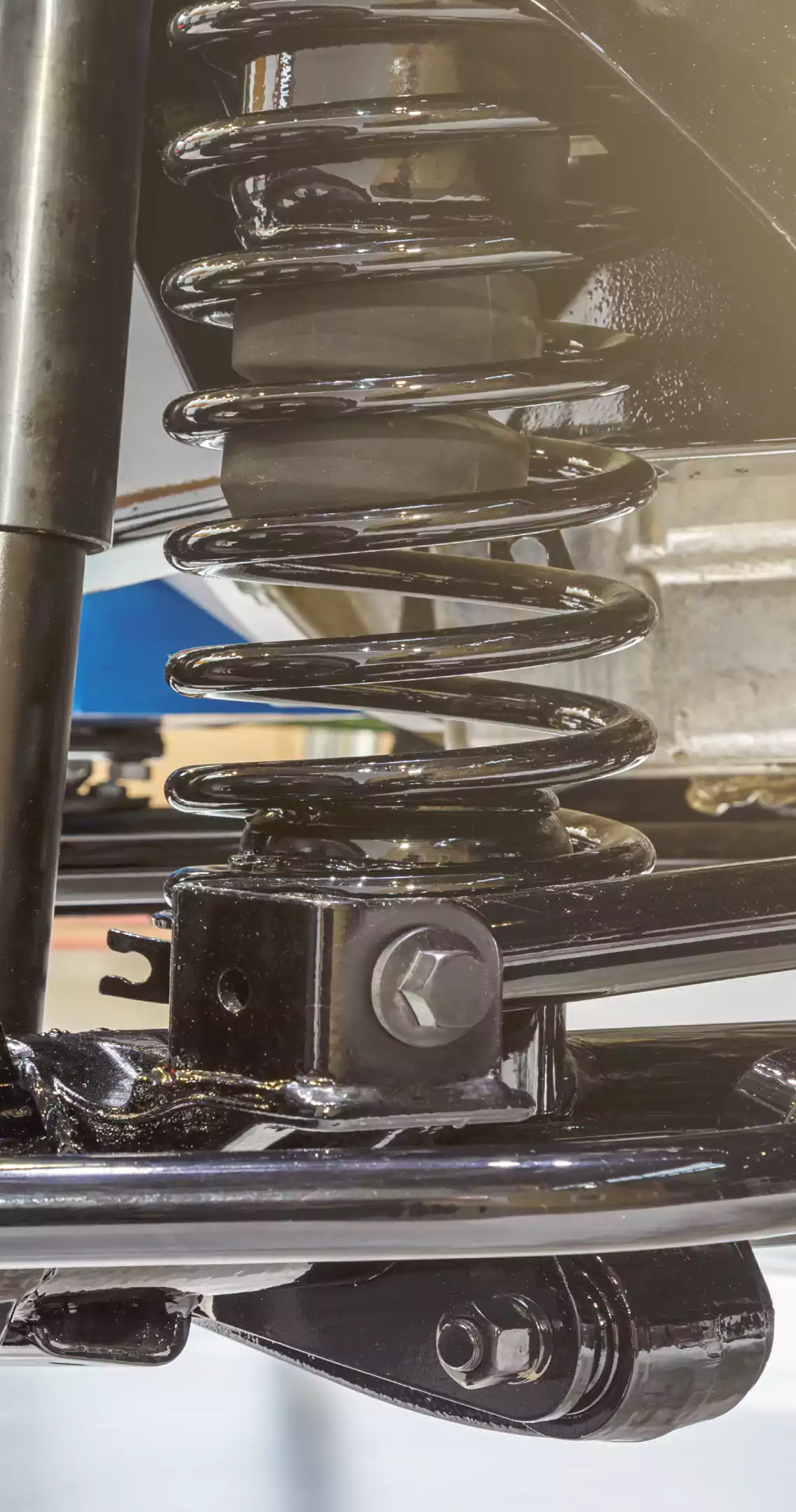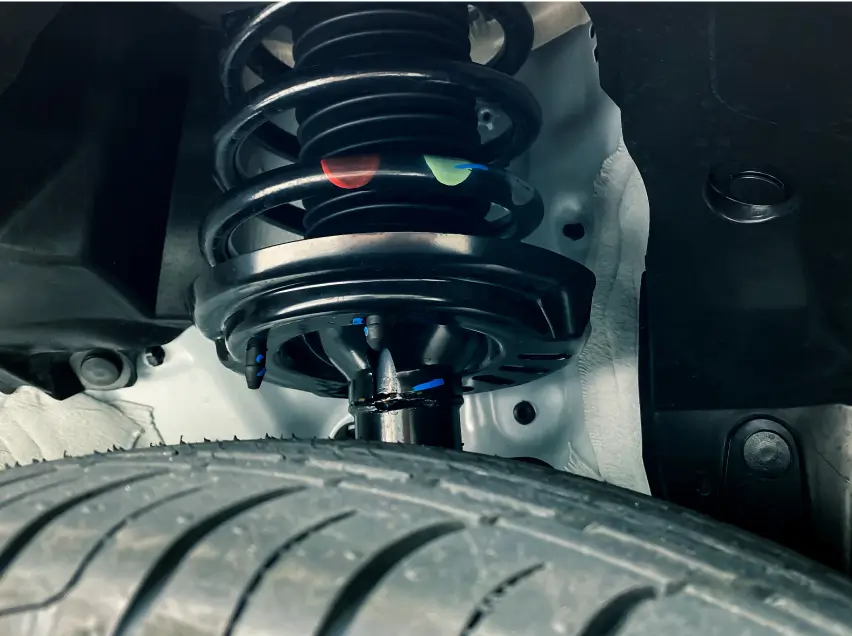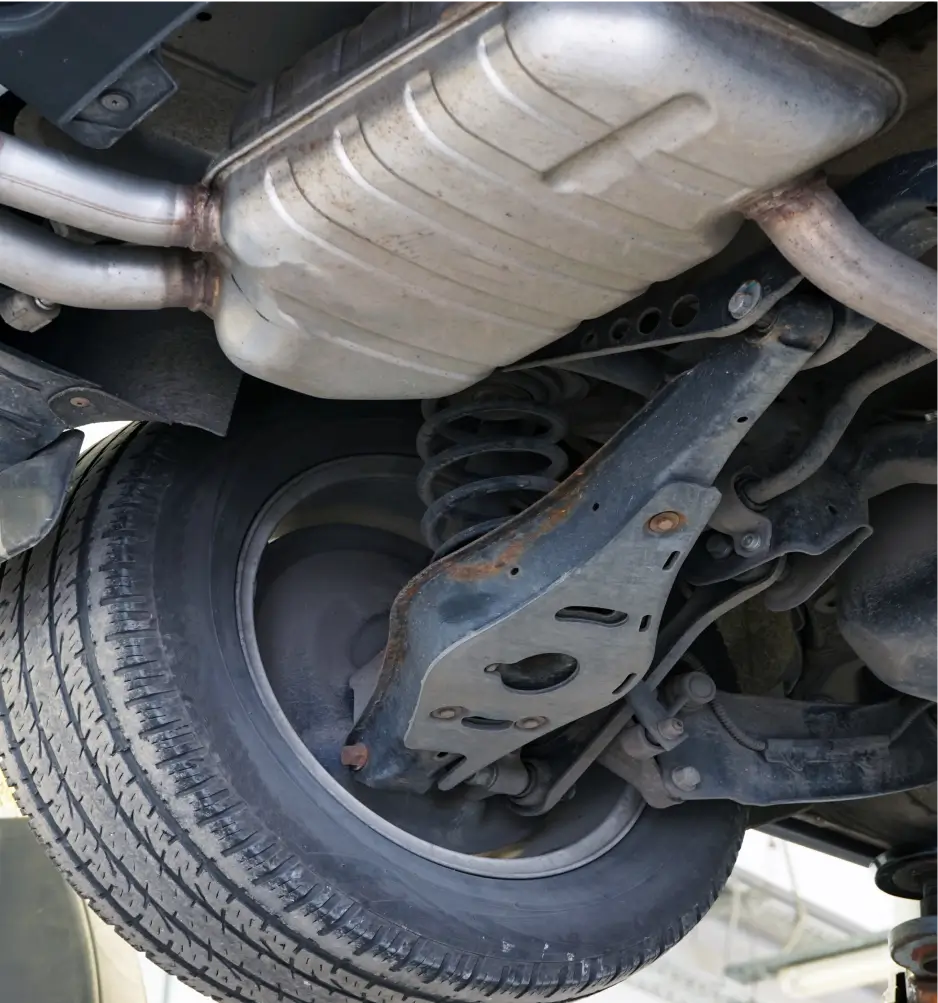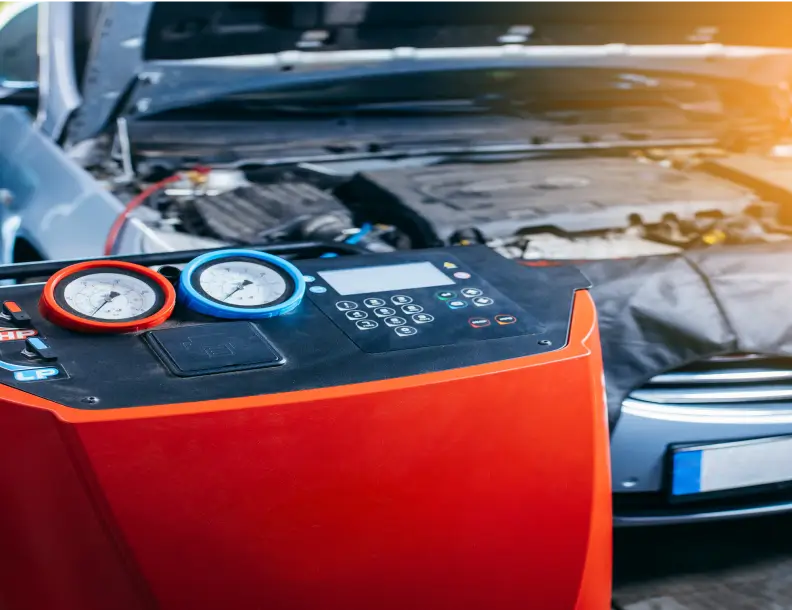Shocks and Struts: How They Affect Your Vehicle’s Performance
Do you know what makes your car drive smoothly? The suspension system has numerous components that help absorb friction so you have a comfortable ride as the driver or passenger of your car. Shocks, struts, and bushings can wear down over time or due to aggressive driving conditions, so it’s always important to have routine inspections and make speedy repairs if you feel a change in your ride.
Master AutoTech – Suspension Experts
At Ogden Master AutoTech, we specialize in vehicles as a whole, which includes the suspension system. If you need suspension diagnostics and/or repairs, our experienced and knowledgeable team can take a look for you. We’re here to find any problems and carry out or recommend repairs.
What is the Suspension System?
Do you know the parts of your vehicle’s suspension system? Or how they all work together for optimal driving performance? Let’s break down the suspension system components and what they do.
Ball Joints
These critical components, located at the end of the control arms, act as the pivotal connection points between the suspension and the steering system. Just as hip joints enable smooth and flexible movement in the human body, ball joints allow for independent movement of the wheels while maintaining a solid connection to the chassis.
Bushings
Bushings absorb vibrations, reduce noise, allow movement for alignment, and bear some weight. Worn bushings cause noise, handling issues, tire wear, and alignment problems. Regular inspection and replacement are crucial.
Control Arms
Control arms are crucial suspension components that ensure wheel alignment, stability and control, shock absorption, and steering response.
Dampers / Shocks
Dampers work by converting the kinetic energy of the suspension into heat energy, which is then dissipated through the hydraulic fluid inside the shock absorber. This helps to dampen the vibrations caused by road irregularities and provides better handling and stability to the vehicle.
Springs
Springs in a car’s suspension system are components that store and release energy, aiding in the absorption of shocks and vibrations caused by uneven road surfaces. They work by compressing and expanding, absorbing the kinetic energy of the movement and converting it into potential energy. This stored energy is then gradually released, allowing the vehicle to return to its original position and providing a smoother and more comfortable ride.
Struts
Struts combine the functions of a shock absorber and a structural component. They provide support for the vehicle’s weight, control the movement of the wheels, and absorb shock and vibrations from the road surface. Struts play a crucial role in maintaining the vehicle’s stability, handling, and ride quality.


Suspension System Wear and Tear
You can probably go up to 50,000 miles on your vehicle’s suspension system without requiring any repairs. However, some types of driving can cause more wear and tear than others such as:
Aggressive driving:
Speeding over bumps, potholes, and other road hazards can put a lot of stress on the suspension system.
Overloading the vehicle:
Carrying too much weight in the vehicle can put a strain on the suspension system.
Poor road conditions:
Driving on rough roads can take a toll on the suspension system.
Signs of Suspension Trouble
So what are the signs your suspension is failing or needs some repairs?
Uneven tread wear:
Unbalanced suspension can lead to uneven wear on your tires.
Vibrations while driving:
if your shocks or struts are worn, you’ll feel excessive vibrations or shaking while driving.
Rattling while driving:
While rattling or strange sounds can indicate a variety of problems, it’s common to hear if the ball joints, bushings, or stabilizer bar links are worn/loose.
Pulling to one side:
If your vehicle pulls to one side when you’re driving, it could be a sign there’s a suspension problem.

Bottoming out:
Continued bouncing after going over a bump is often a sign of worn shocks or struts.
Front-end dives:
When there’s suspension trouble, your vehicle may nose-dive when you brake or accelerate.
Leaking oil:
Your suspension system may leak oil if there’s a problem.

How Often Should You Get Your Suspension Checked?
As mentioned, it’s good to have your suspension system inspected every 50,000 miles. However, due to driving habits and conditions, it may be beneficial to get it checked annually just in case. Consider adding a suspension inspection to other routine inspections or services, such as an oil change or tire alignment, when you bring your vehicle to Master AutoTech Ogden.

The Master AutoTech Difference
At Master AutoTech Ogden, we understand how important a well-functioning suspension system is for your vehicle’s performance and safety. Our team of experienced professionals is dedicated to providing top-quality suspension diagnostics and repair services using the latest tools and techniques. Trust us to keep your vehicle running smoothly and safely. If you suspect any issues with your suspension system, don’t hesitate to contact Ogden mechanics today.
Send us a Message
For general inquiries, use the contact form below. If you are looking to receive an estimate for
work on your automobile, visit our Request an Estimate page.


